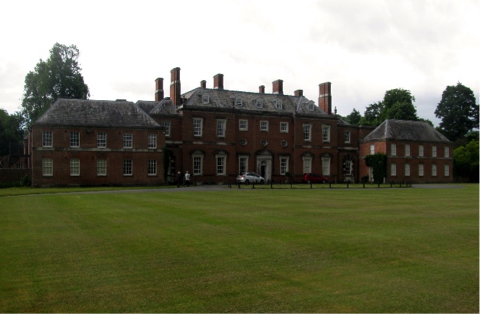Fig. 1: Captain Charles Austen by Robert Field, 1810
While Charles Austen was serving on the North American Station of the Royal Navy during the Napoleonic Wars, he was constantly cruising at sea. He was required to protect British trade, to interdict American trade with Napoleonic Europe, to escort convoys of British ships carrying troops and trade goods, and to capture French Privateers or armed enemy warships, when the chance occurred. He and his fellow captains patrolled the Atlantic coast from Nova Scotia to Florida and the waters around Bermuda. Such extensive cruising took a “heavy toll on masts, yards, sails and rigging and, when ships struck a ledge or shoal, on their copper bottoms.”[1] In consequence, Charles depended on the extensive facilities of the Halifax Naval Yard and the capabilities of its workforce for repeated repairs to his sloop of war, HMS Indian (18 guns).
Fig. 2: HMS Atalante, sister ship to HMS Indian (18 guns) and built to the same design
Between 1805-1810, Charles profited from the Yard’s skilled sail makers, caulkers, joiners and shipwrights and the services of the careening wharf. He was particularly grateful for the Yard’s services, when, in July 1806, the Indian urgently required an increase and rebalancing of her ballast.[2] Without this corrective, the Indian would have been endangered when working off a lea shore[3] because she could not have carried enough sail.
Fig.3: View of the Halifax Naval Yard, including the sheer legs standing tall by the shore.[5]
Selections from the Indian’s logbook for the Fall of 1809 reveal a profile of the range of services the Halifax Naval Yard provided for her after four years of wear and tear at sea. According to the entry for 15 September, the men “unbent the sails and sent them ashore to the Dockyard.”[4] Apparently not all the sails were in acceptable condition for two months later, men were “employed fitting a New Main Sail.” On 25 September, the main mast was taken out, and the rigging was examined. This task would have required the removal of the running rigging, consisting of the ropes used to work the sails and yards (the spars on which the square sails were set) as well as the standing rigging which supported the mast. Apparently, this was not sufficient for on 7 November, Yard workers were employed “rattling down the Top Mast Rigging.”
On 16 October the men “erected a pair of sheers and got out the Mizzen Mast.” The “pair of sheers” employed for this task was a two-legged lifting device specially designed for extracting or positioning masts. Three days later, the workers “hoisted in the New Mizzen Mast and stepped it.”
Fig.4: Model of Sheer Legs used in the Halifax Naval Yard.
Caulking and careening were essential parts of any refit. On 26 October there were “eleven caulkers caulking” the Indian. Caulking made watertight the seam between two planks, in particular those on the ship’s bottom and exposed decks. The caulkers pressed oakum[6] or strips of hot tarred ropes into a seam and then sealed it with hot pitch.
During November 1and 2, the work force was “readying [the Indian] for heaving down” and subsequently “transported [the] ship to the Careening Wharf.” At the careening wharf the vessel was hauled out of the water by careening capstans (winches) on each side of the wharf and then rolled on its side in order to clean, caulk and repair her exposed bottom. As this procedure was crucial to maintaining the seaworthiness of a ship, the Navy insisted that its vessels were regularly careened.
While the Indian was still at the Yard, some smaller repairs were accomplished. On 15 November “3 Joiners from the Dock yard [were] fitting benches in the Gun Room” and the next day “2 Shipwrights from the Dockyard [were] making Fore Hatchway Ladders.”
After two months of repairs and refits the Indian was once again ship shape and sea ready. No doubt Charles Austen was thankful for the security provided by all this expertise being available at the Naval Yard in Halifax, Nova Scotia when he needed it. [7]
[1] See Julian Gwyn, Ashore and Afloat, The British Navy and the Halifax Naval Yard Before 1820, University of Ottawa Press, 2003, 129.
[2] I am indebted to Julian Gwyn’s informative Glossary in Ashore and Afloat for the meaning of technical terms associated with refitting and repairing a naval vessel.
[3] For the requisition to reposition the Indian’s ballast, July 2006, see HAL/A/3,130,131, National Maritime Museum, Greenwich, England. Ballast was additional weight, often stones, put in the ship’s hold to provide greater stability.
[4] Although the logbook refers to the “Dockyard” strictly speaking, the Halifax facility was a “Naval Yard.” See Gwyn, p. 16-17. All logbook entries are from ADM 51/1991, The National Archives, Kew, England
[5] This aquatint is by George Parkyns, titled “View from Fort Needham near Halifax, 29 April 1801, Art Gallery of Nova Scotia.
[6] Oakum consisted of string-like hemp fibre sourced from old ropes.
[7] After 1809, there were some facilities available for servicing naval vessels at the developing Bermuda Naval Yard. However, during the time Charles was serving on the Station, the major expertise and extended facilities for repairs and refits were best had at the Halifax Yard. Any major rebuilding of a vessel was done at one of the Home Yards in England.



![Fig.3: View of the Halifax Naval Yard, including the sheer legs standing tall by the shore.[5]](https://images.squarespace-cdn.com/content/v1/5c1547768ab722e48ecf1942/1579792694406-15V978OXSJA4213HLUVH/Naval_Yard.jpg)
































